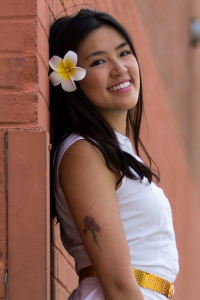Bridging the East and West Through Osteopathic Medicine
Published August 09, 2023
By Sandra Kumwong
Choose DO

By Sandra Kumwong, Southeast Asian Director, Asian Pacific American Medical Student Association, OMS II, Touro College of Osteopathic Medicine - Harlem
“Osteopathic medicine is perfect for our immigrant parents.”
This was the line that stuck with me as a premedical student and solidified my choosing DO three years later. In 2018, my Asian American studies professor was invited to speak at the National Asian Pacific American Medical Student Association (APAMSA) conference in New York City. Knowing my interest in medicine, she invited me to tag along with her. I sat in the back row of the main auditorium, feeling intimidated by all the people who I wanted to be, until someone tapped my shoulder and invited me to sit with them. The chapter at Touro College of Osteopathic Medicine at Harlem took me under their wing the whole day and advised me to visit one of their professor’s workshops titled, “Explaining osteopathic medicine to your families.” There, I learned what osteopathic medicine was and all the details of what I would come to know of my future career, and interestingly, how to explain to your family what osteopathic medicine is.
The presenter touched on how sometimes immigrant families can’t understand the similarities or differences between a DO and MD degree and therefore perceive the DO degree as less than an MD degree. To combat this, it’s important to explain how osteopathic medicine is inherently more integrative and holistic in the way that we practice, which could be beneficial to many patients coming from diverse cultural backgrounds. He explained how his own family relied on Ayurvedic medicine, forgoing allopathic medicine in many cases. Because of osteopathic medicine’s emphasis on mind, body and spirit, he was able to understand the benefits of different types of healing and was able to educate his family on how to integrate both Eastern and Western frameworks. He would even perform osteopathic manipulative treatment (OMT) on his family who were used to physical forms of treatment.
This story resonated with my desire to pursue medicine and shaped the way I wanted to pursue it. I find that many “second culture” communities balance different philosophies of medicine within their own lives and can greatly benefit, if not benefit more, from physicians who are trained in whole body healing and can advise on alternative treatments with great expertise. In my mother language, I would say osteopathic medicine “มาจากรากฐานเดียวกัน” of Eastern philosophies, which directly translates to “coming from the same root.” DOs and MDs are much more similar than they are different. However, I feel that our differences, like all differences, should be celebrated in their own right.
After the conference, I did a deep dive into osteopathic medicine and resolved to apply to DO schools. Three years later, I was accepted into Touro College of Osteopathic Medicine in Harlem and joined APAMSA my first day of class. A few semesters went by, and I became chapter president and then joined the National Board as Southeast Asian Director. While the concept of fate has always been hard for me to comprehend, I knew I was exactly where I was supposed to be.
Continuing my goals of providing integrative care, I was able to study traditional Thai post-partum care and womb healing in my homeland of Thailand in between my 1st and 2nd year. I was astounded by how similar OMT and traditional Thai medicine were, despite the ideologies originating on different sides of the planet, thousands of years apart from each other. When I learned how to perform traditional Thai stomach massage, it was almost the same as mesenteric lifts and ganglion inhibition. When I learned about the acupressure points for different organs, the chapman points lined up to a tee with the ones I learned in class. This learning experience affirmed my choice in osteopathic medicine and made me appreciate OMT as an incredibly valuable and important skillset.
APAMSA had a huge impact on my medical education, and I would not have known about osteopathic medicine so thoroughly so early on in my career without the organization. Seeing how the different parts of me—a daughter of an immigrant and refugee,
Southeast Asian and a holistic healer—are celebrated in these spaces allowed me to push through the barriers associated with my identities because I know there is a place for me in medicine at the end of the journey.
